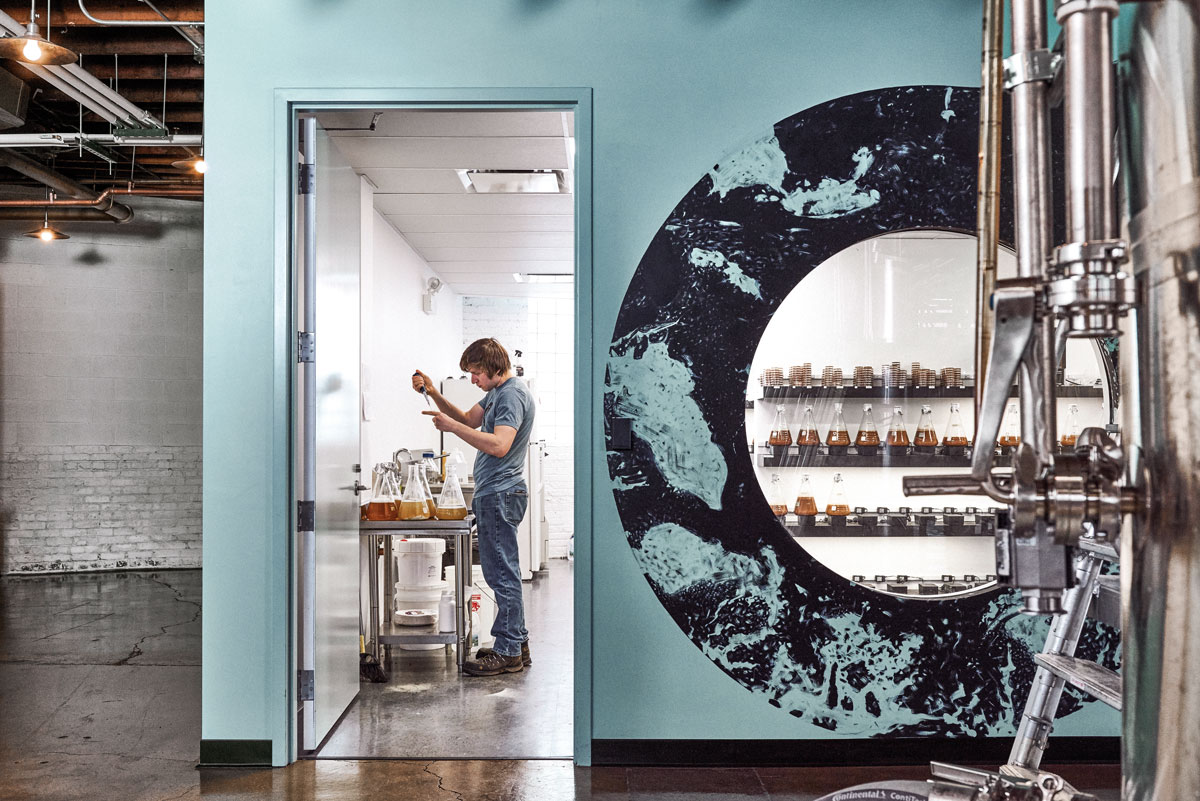Ancient Yeast, Modern Marvel
As recently as 2014, an extraordinary new yeast emerged onto the brewing scene. The Kveik (pronounced “kuh-vike”) yeast, hidden in the fjords and farmlands of Norway, was being used by home brewers and farmhouse breweries, handed down over generations. What makes this yeast so head-scratching is that it breaks all of the rules and norms of beer yeast.
Yeast is the single-cell organism used in brewing and baking to convert sugars to alcohol and CO2. Yeast ultimately turns sweet barley liquid, wort, into beer. Within brewing, the thousands of strains of yeast can be categorized under two main varieties, ales and lagers. Lager yeasts generally ferment at lower temperatures and condition more slowly, creating clean and crisp flavor profiles. Ales, on the other hand, are known for fermenting at higher temperatures, most commonly between 55-75 degrees Fahrenheit. Their more vigorous fermentation imparts more phenolics and fruitier esters than lagers. Different strains operate at different prime temperatures, but most often, the higher the temperature, the more active the yeast will be, and the more phenolics and esters will be imparted in the beer. In the 80s to 90s, most yeasts will start to create off flavors, compounds that don’t taste right. Some historical Belgian styles are known as positive examples of these flavors, like Belgian Saisons, Bier De Gardes or Trappist styles, which characteristically have spicy clove and peppery flavors that the yeasts create. When you get to the high 90s to 100s, most yeast will not survive.
Kveik Qualities
What makes this ancient Scandinavian strain so unique is that it can ferment at super-high temperatures, even up into the 100s. And the beer doesn’t just survive, it thrives, fermenting at double or triple the speed of some other ale yeasts. Remarkably, it does so without creating unwelcome flavors. Instead,the yeast develops pleasant tropical fruit and honey-like flavors.
So what’s the big deal? Well, for many brewers and homebrewers, this is a game changer. One of the biggest expenses for any operation is temperature control of fermentation. While it might be 90 degrees outside, a brewery needs to keep its fermenters at a comfortable temperature to allow their normal lager or ale yeast to do its job. The equipment and utilities needed to maintain temperature control are costly. What if you could create a beautiful beer without having to worry about keeping the temperature at a steady 65 degrees?
Fermentation space is a bottleneck for many operations. When you put beer into a fermenter, it can take two to four weeks to get a final product to package or keg. If you could cut that fermentation time in half with this highly active yeast, you could double your potential output. Many brewers spend a lot of money on expensive fruits and unique hops to impart specific fruity characteristics. What if the yeast could give you the mango-like characteristic you’re looking for in a beer? You’d save big bucks on fresh mangos or Australian hops.
Over the past six years, even more has emerged about this yeast. It turns out Kveik yeast isn’t just one strain, but rather a whole category. Different brewers in Norway were using different types that had evolved and changed over time. There may be hundreds or thousands of unique types with their own qualities. While new-age hops or modified grains had gotten brewers excited, it’s Kveik that has truly turned the brewing world on its head. Many American breweries and home brewers are now using and experimenting with it in a wide variety of styles like IPAs, stouts or unique “Kveik” styles of its own.
Like Kveik?
If you see Kveik mentioned on a local brewery’s rotating taps or growler fill menu, give it a try. Coppertail Brewing in Tampa has been known to use this yeast in their Hop Skull Series, which rotates through different IPA recipes. Stone Brewing is also featuring Kveik in their new offering, Neverending Haze IPA. This 4% ABV IPA features intense orange and citrus notes from the yeast, paired with flavors from a mix of Citra and Mosaic hops. Wynwood Brewing’s Hoppy Chulo Hazy Session IPA also uses the yeast to bring tropical fruit flavors to the forefront of a hoppy yet drinkable beer.
Fortunately, homebrewers can now experiment, too. Omega Yeasts is offering three different Kveik strains, including Hornindal, Lutra and Espe. White Labs is also offering Opshaug Kveik Ale Yeast (WLP518). All are available for homebrewers to purchase and use without the need for precise temperature control. Fill those closets with fermenters.
Thanks to a group of homebrewers in Norway and the scientist and blogger, Lars Garshol, from Oslo area who introduced the yeast to the world, Kveik now has international appeal. Not only does it present amazing new opportunities and benefits to the beer community, but it serves as a reminder that the natural world still has some amazing surprises in store.




